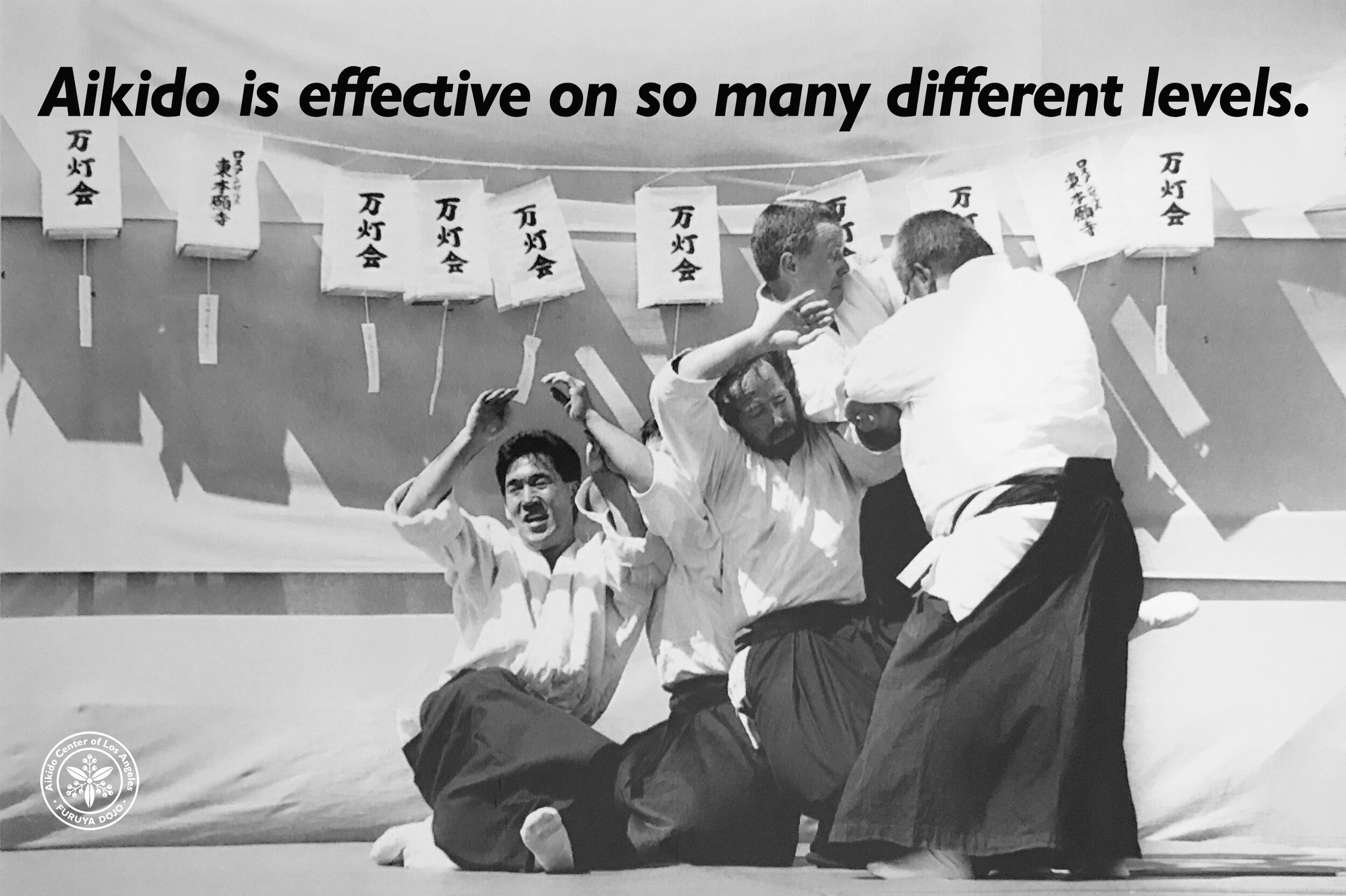Furuya Sensei posted this to his Daily Message on July 24, 2003.
We feel much better inside when we do something for others - more than when we do something just for ourselves. This is undeniable proof that we all have good hearts - never forget this feeling and continue to refine it in your Aikido practice. Although most people have good hearts, few people know how to realize this outside of themselves and channel it towards others. This is what Aikido teaches us to do in its practice.
We think of Aikido as doing something for ourselves, but, in reality, we are doing something for the other person. Aikido is NOT self-protection - it is saving the lives of others.
We think we want to protect ourselves, but what is “self?" It is insubstantial and does not really exist according to the old masters. I guess it depends on how we understand the concept of "human being." As just one person, yourself, or everyone on this planet?
Even though we may understand the truth of things, it makes no difference - we are still focused on "me, me, me!" Perhaps this is the destiny of man and this is why we will always be at war with others. We know that in Aikido, our ki is stronger when it is joined with others - but we only understand this at an intellectual level and does not yet filter down into our "real" lives.
Some do Aikido as a sport. For them, life is a sport, everything is a sport, everything is here for their own pleasure. We call this ukiyo or “The floating, transient world which glides by like a cloud.”
If we only think of Aikido as power and winning over others, then Aikido is just like any other martial art or fighting discipline. To think that we understand the "true" meaning of Peace, only means that we are not training correctly. We all need more practice, more study, more refinement of character!






















